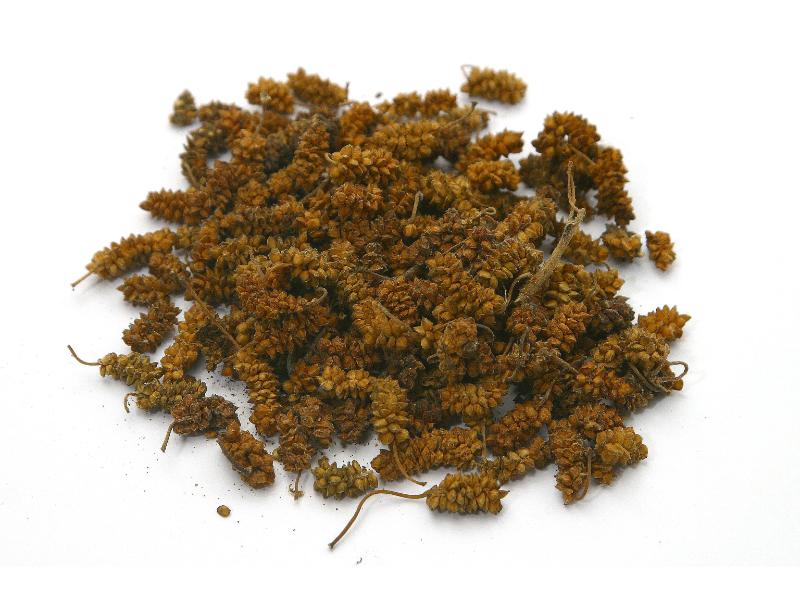Search in medicinals
Mori Fructus
Mulberry
桑椹 〔桑椹〕 sāng shèn

Alternate English names: white-mulberry
Alternate Chinese names: 桑椹子 sāng shèn zǐ; 葚 shèn; 桑葚 sāng shèn; 桑葚子 sāng shèn zǐ; 桑实 sāng shí; 乌椹 wū shèn; 黑椹 hēi shèn; 桑枣 sāng zǎo; 桑葚子 sāng shèn zǐ; 桑果 sāng guǒ; 文武实 wén wǔ shí
Kingdom: Plant
Origin in PRC Pharmacopoeia: Morus alba L. (PRC Pharmacopoeia)
Origin in unofficial sources: Morus alba L.
Use: Medicinal
Category: Supplementing agents / Yīn-supplementing agents
Properties: Sweet; cold.
Channel entry: Liver and kidney channels.
Actions and indications:
- Enriches yīn and supplements the blood: Yīn-blood depletion.
- Engenders liquid and allays thirst: Damage to liquid with thirst; dispersion-thirst.
- Moistens the intestines:
Intestinal dryness constipation.
Dosage and method: Oral: 10–15g in decoctions, pills, or powders. It may be prepared as a medicinal liquor. It may also be decocted down to a paste, which is taken in doses of 15–30g.
Warnings: Contraindicated for diarrhea due to spleen-stomach vacuity cold.
Product description: The fruit of the mulberry takes the form of a spike 1–2 cm long and 6–10 mm in diameter, with a stalk 1–1.5 cm long. It is a reddish or blackish purple in color and is composed of 30–60 oval, slightly flat achenes 2–5 mm long, each with four membranous bracts without and white oily endosperm within.
Quality: Large, fleshy, yellow, sugary fruits are the best.
Production area: Zhèjiāng, Jiāngsū Húnán, Sìchuān, Héběi and most other parts of China.
Etymology: Sāng 桑 denotes the mulberry tree, while shèn 椹 / 葚 specifically denotes its fruit.
Back to search result Previous Next